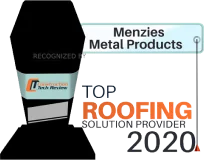Consistent monitoring allows companies to make informed decisions and maintain transparency with stakeholders. The amortization expense for each accounting period is determined by dividing the initial cost of the intangible asset by its estimated useful life. This results in a consistent yearly expense that reduces the asset’s book value on the balance sheet. amortization expense meaning Amortization Expense is a significant financial metric for small business owners as it relates to the gradual reduction in the value of intangible assets.
- Intangible assets are non-physical resources that provide economic benefits to a company over time.
- Although the legal life is 20 years, management estimates the economic life at eight years due to rapid innovation.
- The useful life can vary depending on the nature of the asset and company policy.
- Consistent monitoring allows companies to make informed decisions and maintain transparency with stakeholders.
- Each method has its advantages, suitable for different business strategies and financial goals.
In some cases, an intangible asset might have a residual value at the end of its useful life, although this is less common than with tangible assets. If there is a residual value, it should be subtracted from the cost of the asset to determine the amount to be amortized. Calculating amortization expense involves spreading the cost of an intangible asset over its useful life. Here’s a guide on how to calculate amortization expense, primarily using the most common method, the straight-line method.
Another catch is that businesses cannot selectively apply amortization to goodwill arising from just specific acquisitions. Use Form 4562 to claim deductions for amortization and depreciation. This method divides the depreciable amount of the asset (cost minus residual value) evenly over its useful life. The term amortization is used in both accounting and lending with different definitions and uses. Only to the extent related to the current financial year, the remaining amount is shown in the balance sheet as an asset. Suppose a company Unreal Pvt Ltd. develops new software, gets copyright for 10,000, and it is expected to last for 5 years.
Account
This systematic reduction ensures that the balance sheet accurately reflects the remaining economic value of the intangible asset. Suppose a company buys a patent for $180,000 that lasts for 20 years. The cost of acquiring the patent, say another $20,000 for legal fees, is also factored in, bringing the total to $200,000. This cost is then amortized over the life of the patent, leading to an annual amortization expense of $10,000.
As such, amortization schedules should be reconciled against other supporting documents to ensure accurate amortization expense recognition. Internal control over amortization expense is important for all stakeholders in a business. For example, cash can be taken from a bank account and a false prepaid asset can be created, to conceal the theft. To illustrate, consider a company that acquires a patent for $100,000, with an estimated useful life of 10 years and a zero residual value. Using the straight-line method, the annual amortization expense would be calculated as ($100,000 – $0) / 10 years, resulting in an annual expense of $10,000. This consistent expense recognition simplifies financial planning and reporting.
Balloon payments
By leveraging Thomson Reuters Fixed Assets CS, firms can effectively manage assets with unlimited depreciation treatments, customized reporting, and more. A business client develops a product it intends to sell and purchases a patent for the invention for $100,000. On the client’s income statement, it records an asset of $100,000 for the patent. Once the patent reaches the end of its useful life, it has a residual value of $0.
AccountingTools
An asset that’s acquired by a company might have a long, useful life. It may provide benefits to the company over time, not just during the period in which it’s acquired. Amortization and depreciation are two main methods of calculating the value of these assets whether they’re company vehicles, goodwill, corporate headquarters, or patents.
Private companies may elect to amortize goodwill over ten years or less. Let’s explore practical examples where businesses encounter amortization expenses to help clarify how this accounting concept applies in real-world scenarios. The SYD method is another form of accelerated amortization, allocating larger expenses to earlier periods. It uses a fraction that declines over time, based on the asset’s remaining useful life. The double-declining balance method is an accelerated approach that applies twice the straight-line rate to the asset’s remaining book value. It frontloads amortization, making it useful for assets that lose value quickly in the early years of their useful life.
More depreciation expense is recognized earlier in an asset’s useful life when a company accelerates it. These options differentiate the amount of depreciation expense a company may recognize in a given year, yielding different net income calculations based on the option chosen. A business might buy or build an office building and use it for many years. The business then relocates to a newer, bigger building elsewhere. The original office building may be a bit rundown but it still has value. The cost of the building minus its resale value is spread out over the predicted life of the building with a portion of the cost being expensed in each accounting year.
- A company recognizes a heavier portion of depreciation expense during the earlier years of an asset’s life under this method.
- When an asset brings in money for more than one year, you want to write off the cost over a longer time period.
- For individuals and businesses, understanding the amortization of loans helps in planning monthly budgets and long-term financial strategies.
In such scenarios, each payment is less than the interest charge on the loan, causing the outstanding balance to increase rather than decrease over time. This typically emerges from adjustable-rate loans or certain mortgage products with flexible payment options. Next, the amortization expense is added back on the cash flow statement in the cash from operations section, just like depreciation Expense. If you pay $1,000 of the principal every year, $1,000 of the loan has amortized each year. You should record $1,000 each year in your books as an amortization expense.
Over time, as the loan balance decreases, the interest portion shrinks, and more of each payment goes toward the principal. If related to obligations, it can also mean payment of any debt in regular instalments over a period of time. Home and other loans often talk about such amortization schedules. Each year for 10 years, you’ll record an amortization expense of $10,000 on your income statement. On your balance sheet, you’ll reduce the value of the patent by the same amount.


